
In 2015, the NRC issued RIS 2015-06 to clarify their position that all nuclear sites need to evaluate tornado missile impacts. Right now, the nuclear industry is working on guidance to describe just how to do this. That guidance is based mainly on probabilistic methods.
The probabilistic methods often assume a failure probability of 1 if the target is hit. We’ve found that it’s sometimes much easier to actually evaluate the impact, and prove that the target won’t fail due to a strike.
One of the biggest challenges with evaluating tornado missiles is that they’re not intuitive. It’s easier for an engineer to estimate the size of a pipe support, but how thick does a plate need to be to stop a piece of rebar at 135 ft/s? With this article, we’re going to help make this a little more intuitive. We’ll also look at some other tips and tricks that you can use to show that tornado missile strikes might not be as bad as you once thought.
It’s All About Energy Absorption
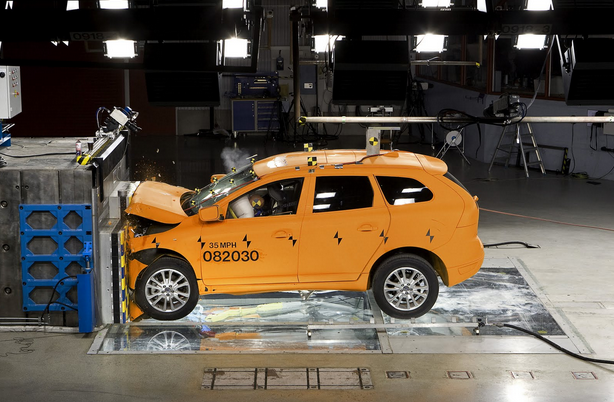
Missiles have kinetic energy (mass x velocity![]() ), and that energy needs to be dissipated to stop the missile. Note that velocity is squared, so a slight increase in speed is a large increase in energy. To stop the missile, it requires energy, which can be thought of as force x distance. In other words, it’s the force to resist the missile, times the distance required to stop it. You can either increase the resisting force and decrease the distance (do this with stiffness and mass), or you can increase the distance required to stop the missile (do this with ductility, global response, and other energy absorbers).
), and that energy needs to be dissipated to stop the missile. Note that velocity is squared, so a slight increase in speed is a large increase in energy. To stop the missile, it requires energy, which can be thought of as force x distance. In other words, it’s the force to resist the missile, times the distance required to stop it. You can either increase the resisting force and decrease the distance (do this with stiffness and mass), or you can increase the distance required to stop the missile (do this with ductility, global response, and other energy absorbers).
You can also look at stopping the missile over some time duration. The math changes, but the principal is the same; slow the missile down gradually, and the resisting force is lower.
The graph below drives this point home. The Bechtel Report, BC-TOP-9A (more on that below), gives a force vs time history for an automobile impact as a quarter sine wave. We compared this with an analytical crash between a truck and a water storage tank. As you can see, it compares reasonably well.
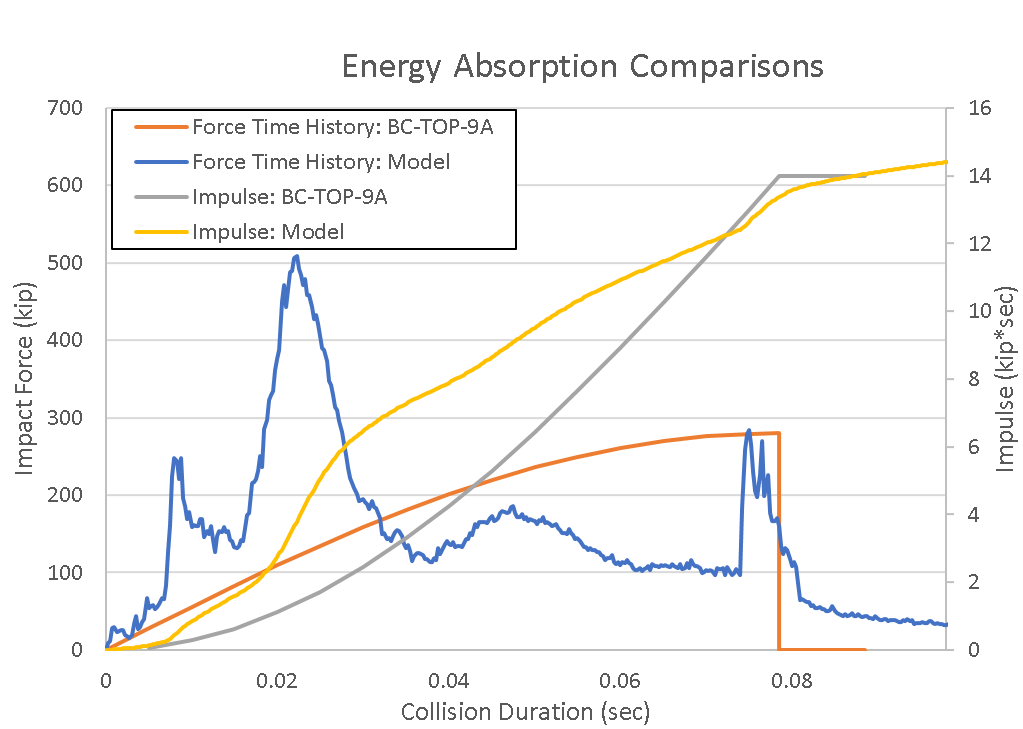
The analytical impact had a much higher initial resisting force, that decreased as the BC-TOP-9A force increased. To better compare the two, we looked at the impulse (integral of Force vs Time curve). Impulse is a reasonably good indicator of the cumulative energy absorbed over time. As you can see, the data compares reasonably well.
BC-TOP 9A: The Starting Point for Missile Protection Design
Before we get into concepts behind missile protection, we should discuss BC-TOP-9A. This is the report written by Bechtel on Tornado missile protection. It covers different methods that can be used when designing systems and structures. The two most notable methods and equations in the missile protection field are discussed here; Ballistics Research Laboratory (BRL) formula, and the Stanford Equation. The report covers both the evaluation of concrete and steel, but this article will focus on missile protection using steel.
The Stanford and BRL equations are very useful for the design of missile barriers. The formulas compare reasonably well with both test data, and with FEA data. The figure below shows a comparison of the BRL and Stanford equations, compared to an FEA model (FEA model is a simple 4ft square plate, with a 3 ft long, 1 inch diameter rebar strike at the center). As you can see, for this case, the data compares very well. If you’d like to calculate this for yourself, visit our tornado missile calculator page. Here, you can change all of the parameters to determine the plate thickness needed to stop a missile of your choosing. We also have a calculator for a reinforced concrete target as well.

The trouble with the Stanford and BRL equations is that they assume that all of the energy is absorbed by the plate! In most systems, there’s a global response. That global response allows the energy to be dissipated across different components, and over a longer period of time (and distance).
Another problem with these equations is that they’re only for flat plates with some very specific constraints. If this is your situation, then it’s reasonable to use them, but if you are evaluating anything other than flat plates (e.g. pipes, doors, tanks, etc.), then you need to do something a little different.
Energy Absorption Over Distance and Time
One method to absorb energy is to do it over some time. Remember, energy is force*distance, so slowing down the missile over a larger distance requires less force. This is very important to consider when evaluating structures for impact. Deformation is good because it allows for a longer deceleration, and a lower resisting force.So what should one look for?
- For piping systems, look for pipe supports, and loosely supported pipes (e.g. rod hangers). These systems have a high likelihood of surviving an impact.
- For piping systems that could crush, the evaluator should look at what the missile will be crushed against. Is it a block wall? Reinforced concrete? This can have a big impact on whether or not the pipe will be crushed.
- Another thing to look at for pipe crushing is how far the pipe is located from the wall. The more the pipe deflects, the more energy is absorbed. If most of the energy is absorbed before the pipe every makes contact with the wall, then there’s a good chance that the pipe won’t crush or be pierced.
- For steel plate, look for broad, unsupported spans. This seems counter-intuitive, but broad, unsupported areas are less stiff, and they will allow for more deflection (distance), requiring less stopping force (plate thickness). This still depends on the missile, but for some of the Region I missiles from RG 1.76 Rev. 1, a span of about 4 feet seems to work relatively well for energy dissipation. Again, this is a case-by-case situation.
- Of course, another energy absorber may be the barrier itself! If you find that the barrier was penetrated, now is the time to check the residual velocity. If residual velocity is low, then your critical target may be able to survive the strike!
Example Case: Water Storage Tank Impact Analysis
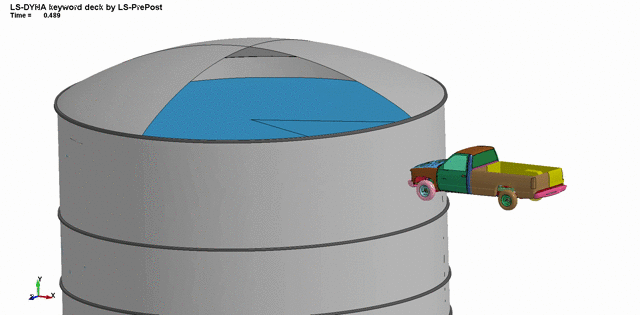
The biggest energy absorber we evaluated was the impact of an API 650 water storage tank. A missile strike on the wall of the tank caused some deflection, and that deflection caused water to be displaced (a lot of water). That, in turn, increased the resistance force. Effectively, the water absorbed much of the energy from the strike. We have performed three (3) of these evaluations, and we were able to show that, in each case, the tanks were able to resist the impact from the RG 1.76 Rev. 1 truck in Region 1 (4,000 lbs, 93 mph)! The tanks shell for each tank was nominally only ¼” thick. The analysis showed that, each time, the water absorbed about 30% of the energy from the missile!
Footnote: This only works when the tank is full of water, but if the tank isn’t full of water, then it didn’t need to survive a strike!
Pipe Impact Example

We evaluated the impact of a piping system from a tornado missile, and found that the pipe (6”-8” nominal sch. 40 pipe) was able to survive the impact from the RG 1.76 Rev. 1 pipe. Using FEA, we impacted the pipe from a number of worst-case locations, and showed that the global deformation of the piping system absorbed a significant amount of energy. The system also was loosely supported, and had a tendency to move out of the way as a result of the strike, an added benefit!
Don’t forget the welds!
Remember when you’re evaluating your tornado missiles, welds are regions of decreased ductility, and they can’t absorb as much energy as the parent plate (assuming similar geometry). When Sandia National Labs did their Containment Testing, they also looked at the failure strain for welds. They found that the weld failed at only 60% of the maximum strain of the base metal. Keep this in mind when you’re evaluating your structures.
Ask Us Your Questions
We want to help your site evaluate your tornado missiles. We are happy to answer questions, give feedback, or share our experiences with you. We’ve tested missile barriers including expanded metal, grating, plate, block walls, and more! We’ve also qualified existing structures for missile resistance, and we’d be glad to point you in the right direction.

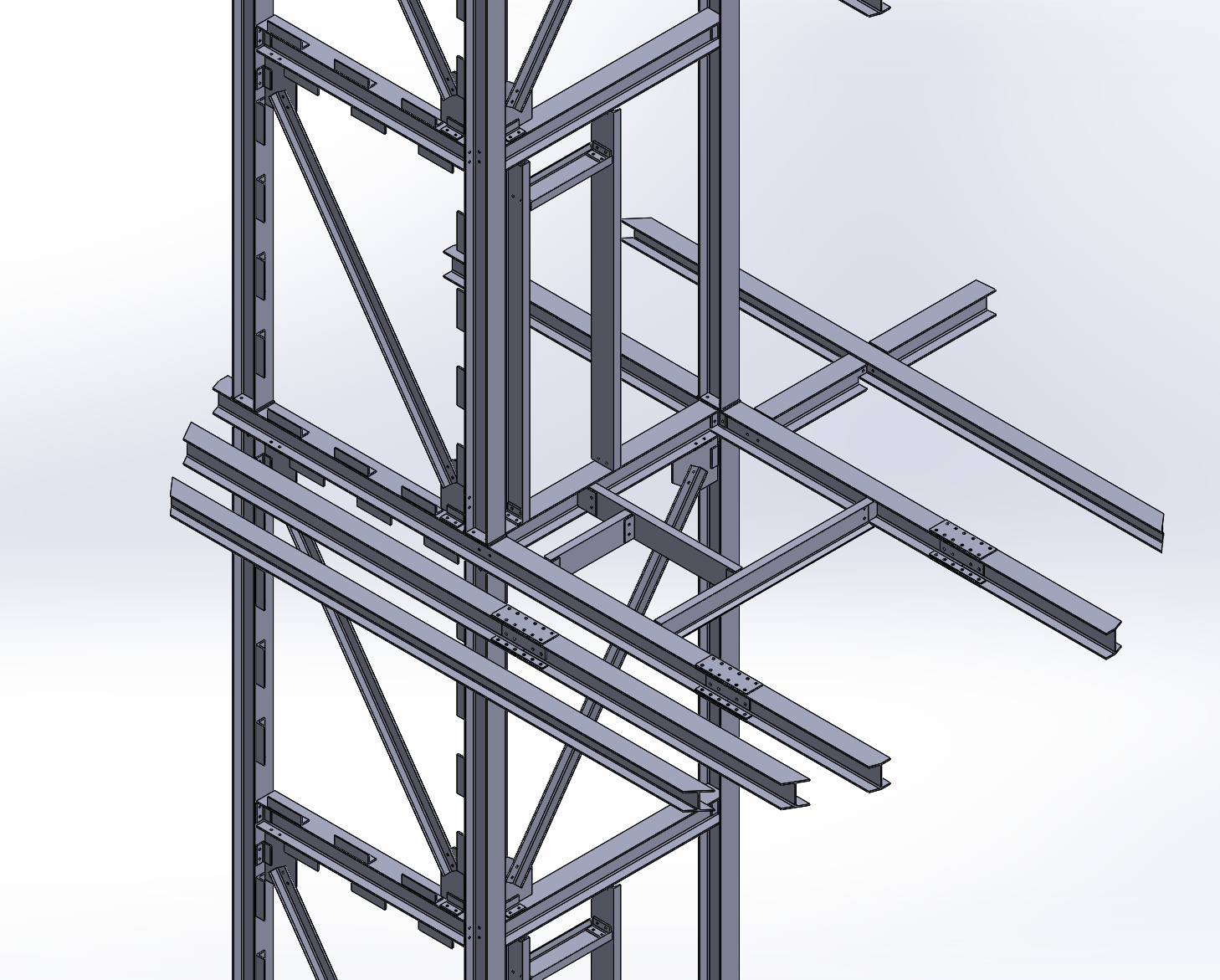
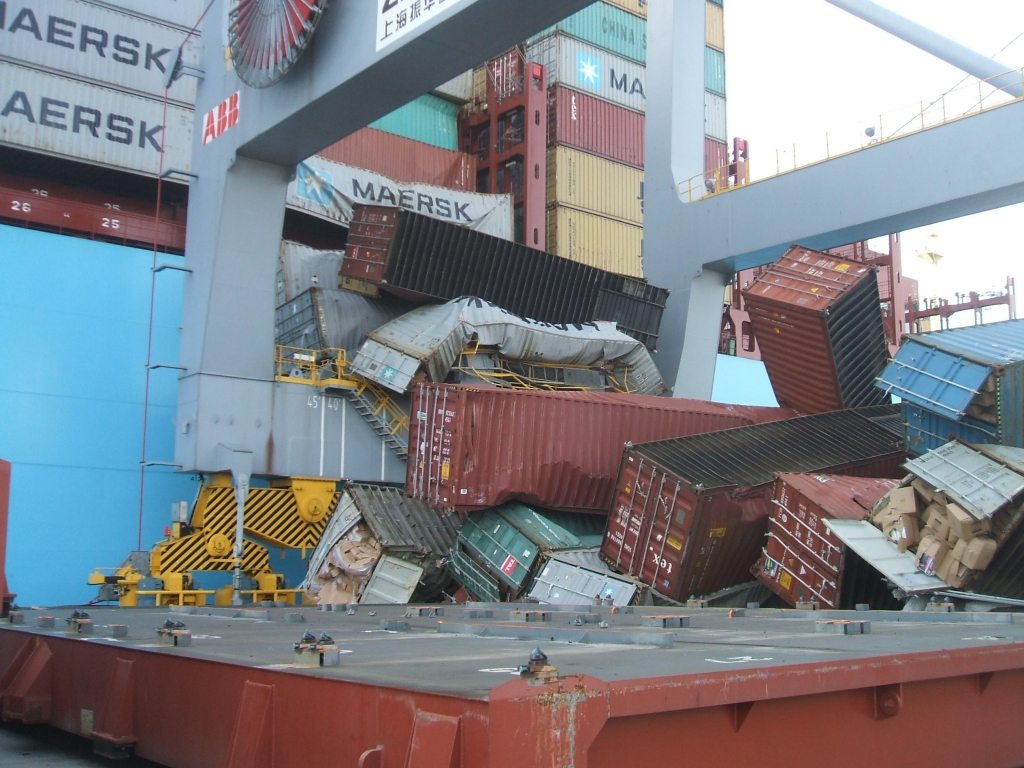
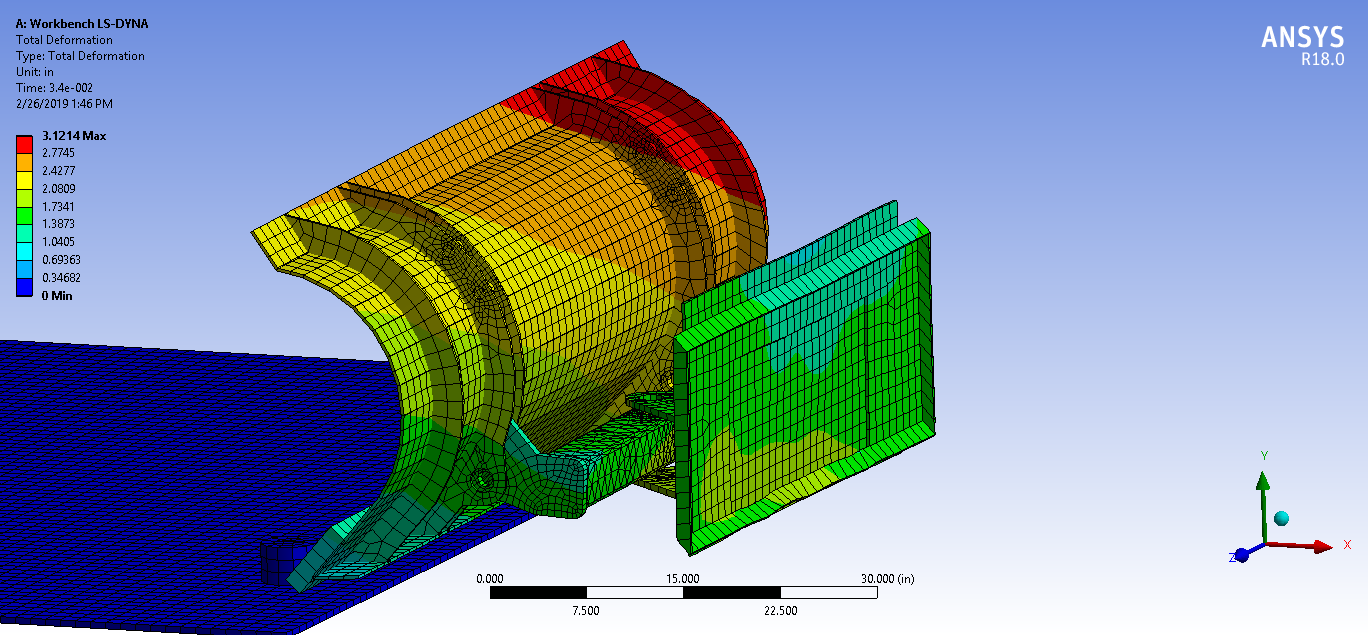
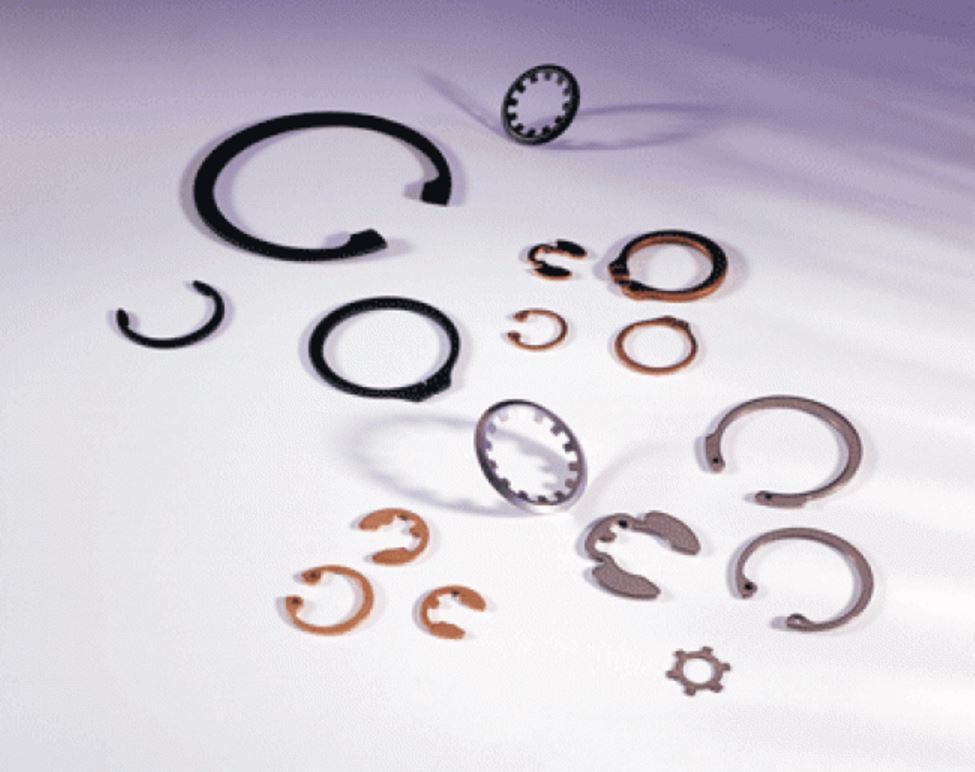




One thought on “Tornado Missile Evaluator Tips”
Good day,
I would like to enquire whether you can provide a prefabricated enclosure to protect a critical compressor against ballistic missile impact?
What level of protection can your barriers protect against? Have you fabricated enclosures to protect such equipment?
Regards
Jameel